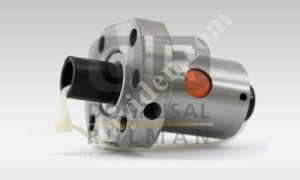 How to detect washing machine bearing failure in your home
How to detect washing machine bearing failure in your homeIf you're one of those homeowners who take their washing machine seriously, you know that the chances of it breaking down are very high. That's why it's important to be aware of common bearing failures in a washing machine and how to detect them early. If you don't have time to invest in a brand new washing machine, here are some tips on how to check for faulty bearings in your home.
Detection of Washing Machine Bearing Failure in Your Home.
If you notice that your washing machine is not making a loud noise or that the water is not running through the Rinse Cycle, it may be experiencing a bearing malfunction. around (known as “torque”); 2) Decreased water flow; 3) Shorter cycles in the Rinse Cycle; 4) Larger traces of water on the drum side of the machine.
What should you do if you detect a bearing defect in the washing machine?
If you detect a Bearing Fault, please follow these steps: 1) Disconnect all power to the machine and check for loose screws or cords;2) Check for leaks;3) Clean all parts of the machine with soap and water before restarting. -assembly;4) Reconnect all power to the machine and test its integrity;5) Cleaning fluid from brushes and bowls is recommended every 6 months.
How to Detect Washing Machine Bearing Failure in Your Home.
If the bearings in your washing machine are starting to show signs of wear, it may be time to replace them. To do this, you will first need to check the seals in the bearings. Check for loose or missing parts and make sure all screws and washers are in place. You will also need to check the bearings for proper lubrication if there are any signs of wear.
Check the bearing for wear.
If the bearings in your washing machine are starting to show signs of wear, they are probably at the end of their useful life. To prevent this from happening, you first need to check for any loose or missing parts and make sure all screws and washers are in place. If there are any signs of wear, you should also make sure the bearing is properly lubricated by checking the proper oil levels and tread depth.
Tips for Detecting Washing Machine Bearing Failure in Your Home.
If your washing machine is giving an "out of oil" message, it may be due to a bearing failure. To check for bearings that need replacing, remove old bearings and replace with new ones.
Check the bearings for wear by running a SpinXerator test to see if they show any signs of wear. Bearings that are not used often experience wear and tear, which can cause the bearing to fail.
Check that the machine is properly lubricated by adding Lubrin-Lube (a synthetic lubricant) to the washer and dryer fluid levels and running the machines. If you find any malfunctions or poor performance in your washing machine, you can take action to correct them by calling a service center or warranty repair service.
conclusion
Detecting a washing machine bearing malfunction can be a difficult task. However, it is possible to successfully solve the problem with the help of these tips. If you notice any Bearing Failure in your home, please do not hesitate to contact our customer service for assistance. Thank you for reading!
